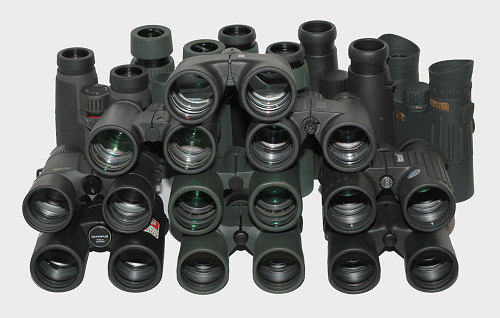Long-lasting, endurance tests of binoculars
All companies which have sets of binoculars in their line-up, are invited to take part in our great 8x42 binoculars’ test. This time, during a series of hard endurance trials we would like to check not only optical properties of the equipment but also its durability.
The market of binoculars keeps growing very quickly indeed. In fact every year we see a new company entering it, which launches several series of products. What’s more, already existing companies tend to replace its product line-ups much quicker than before. Often we observe a situation where many pairs of binoculars come from the same factory and they differ only in their brand name on the casing. Sometimes the differences are more pronounced – a given company can order better coatings than the competitors or close the same optics in a better casing.
Of course every single manufacturer praises its products, stating that they are superior than those of its immediate rivals. Facing such a wide offer, available on the market, the verification of different claims in more detail becomes more and more difficult. Many customers decide to buy the products of well-known, renowned companies, present on the market for many years, which can also provide good warranty conditions and a long warranty period, based on a proper warranty service. However, it is often the case that such products are significantly more expensive than those made by companies existing on the market for a shorter period of time. Our optics tests show that many cheaper models can rival very efficiently with the most reputable pairs of binoculars.
Although we try our utmost to make our tests as extensive and detailed as possible they don’t answer one important question. As a typical test lasts about a month we can’t find out how a given pair of binoculars would manage the long and intensive wear and tear in different conditions. After all durability is often a decisive feature, making customers to buy a definitely more expensive product, manufactured by a company with an established position on the market. They are willing to pay more for a pair of binoculars which is known for its unqestionable solidity, representing a widely recognized brand. The problem is that we don’t know how solid the products of companies less renowned are, especially as they can cost a lot as well. In most of cases these are produced in Japan, their mechanics during our tests was beyond reproach and their manufacturers claim that they are fully weather-proof; sometimes they even come with life-long warranty.
Overall you can say that producers, fighting over prospective customers, can include different achievements in specifications, most often stating that their devices are waterproof, shock-proof, can work in a wide range of temperatures, boasting of dirt- proof qualities of the coatings, their abrasion resistance, and so on. The truth is that nobody checks these claims in detailed and comparable testing conditions. It’s a pity - there’s a lot to be done after all.
Combining all these factors, mentioned above, it is not difficult to guess our plans. We are going to conduct a long-term test of binoculars. With the greatest pleasure we would like to invite all these producers which are not afraid of a more detailed verification of their specifications claims. The tested pairs of binoculars will not be returned or they will be borrowed for a long period of time, which might last roughly a year. During this time they will be used very intensively in different situations and conditions. If a producer states that its pair of binoculars is water-resistant up to a depth of so and so meters, we will plunge it into water to that depth exactly. If a producer claims that its pair of binoculars works in freezing temperatures, reaching –20 or –30 degrees Centigrade, we will test it in these temperatures as well. If the coatings are supposed to be easy to clean, we will make them very dirty and clean them to check whether it is true. At the end the binoculars will be dropped from a controlled height to check how they manage falls from moderate heights or other damages, e.g. hitting a tree. If some other ways of checking the endurance of the tested products occur to us during our tests we won’t hesitate to use them as well.
When it comes to the parameters, we decided to focus on the 8x42 class (including 8x40 and 8x43 models). These pairs of binoculars are perhaps the most numerous on the market so prospective customers will have plenty to choose from. Apart from that we haven’t featured binoculars with such parameters in our tests yet. We are very curious how good they are, optically and mechanically as well. Of course immediately after receiving them the binoculars will be tested according to our standard procedures. Because of that the results of our test will be, by and large, complete.
We are going to start our test in July. We want to give the distributors plenty of time so they can import the binoculars. In most of cases an agreement from a given producer will be needed here as the borrowed pairs of binoculars might be non-returnable. We are really very curious how many companies will be brave enough to participate in our test. Anyway we highly encourage all of them to do so.







